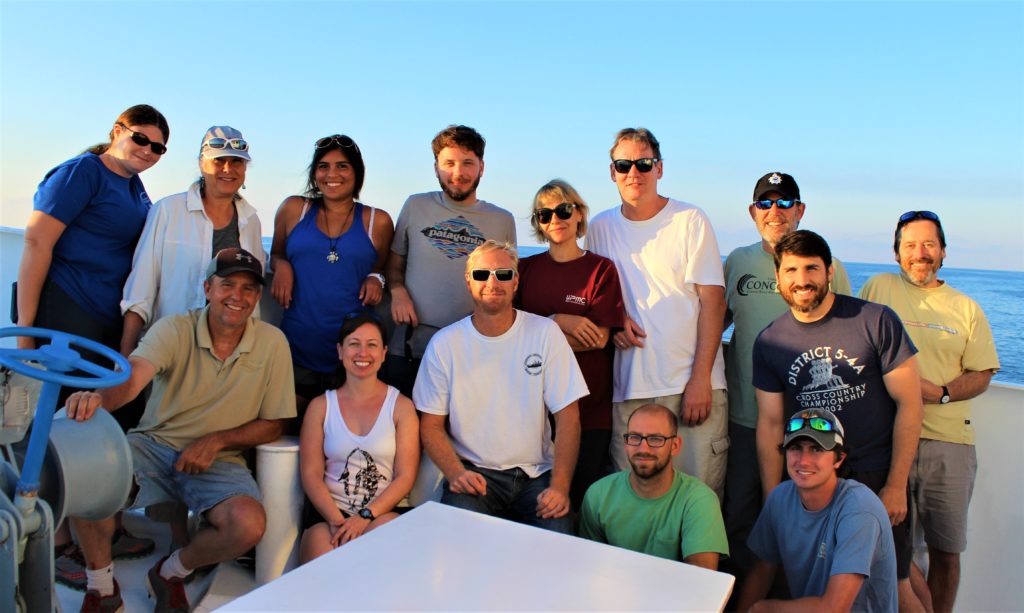Written by: Amy Whitt

Excited, tired, and a little sunburned, our science team returned to the Louisiana bayou on 17 June 2017. We celebrated the success of the survey and how well our team worked together. One of our senior scientists even said that this was one of the best teams she has ever worked with!
During our deepwater (800-2500 m; 2,625-8,200 ft) survey, we had 28 sightings of marine mammals ranging from the largest (sperm whale) to the smallest (Clymene dolphin) cetacean species regularly occurring in the Gulf of Mexico. We also saw pilot whales, pantropical spotted dolphins, and bottlenose dolphins. The population estimates calculated from these data will be compared to those calculated from the acoustics data.
Some of our most interesting acoustic recordings included the Clymene dolphins which had different shaped whistles than other species of the same genus. We also recorded beaked whale vocalizations. These are the first known recordings of beaked whales from a surface vehicle array!
The next steps of this project involve retrieval of the Environmental Acoustic Recorders (EARS) that we deployed. They will be retrieved in a few months, and the acoustic data will be compared with the data recorded from our surface vehicle array. The glider that we deployed has also been continuously recording underwater acoustic data and will be retrieved in a few weeks.
We greatly enjoyed the chance to contribute to this research team which included scientists from the University of Southern Mississippi (USM), Oregon State University (OSU), University of Louisiana at Lafayette (ULL), Seiche Limited, ASV Global, Proteus Technologies LLC, and Azura Consulting LLC.
Thanks especially to Lead Scientist Dr. Natalia Sidorovskaia (ULL) for bringing this team together.


